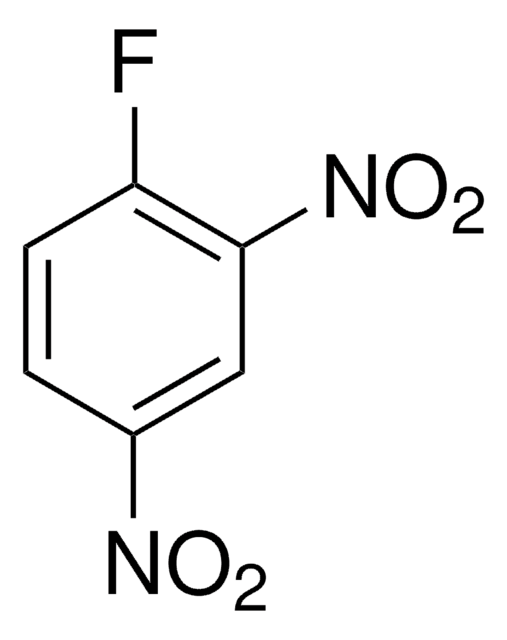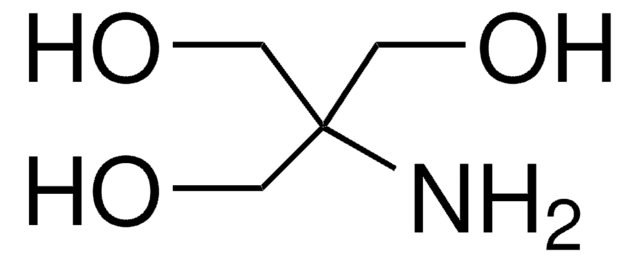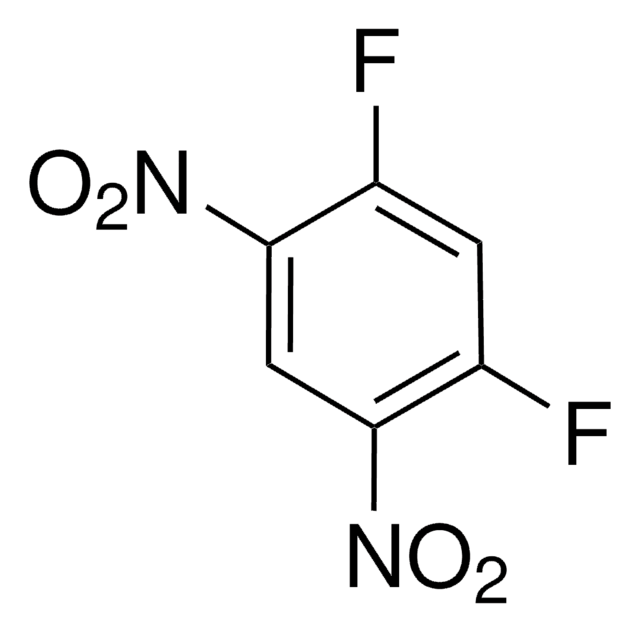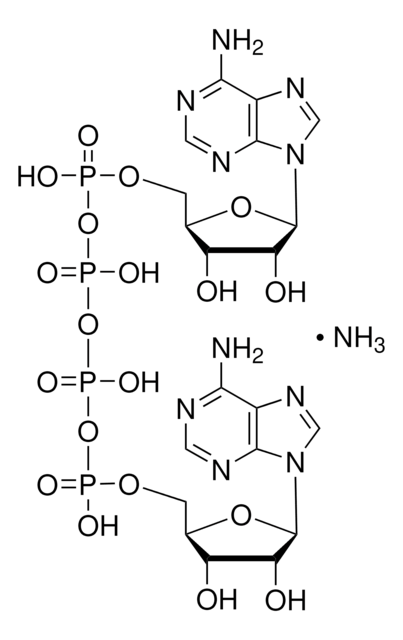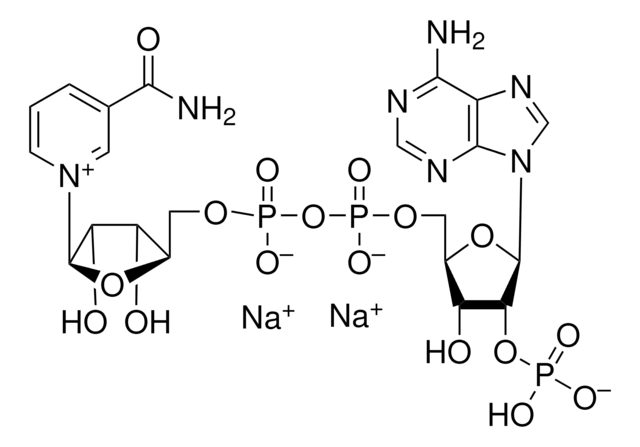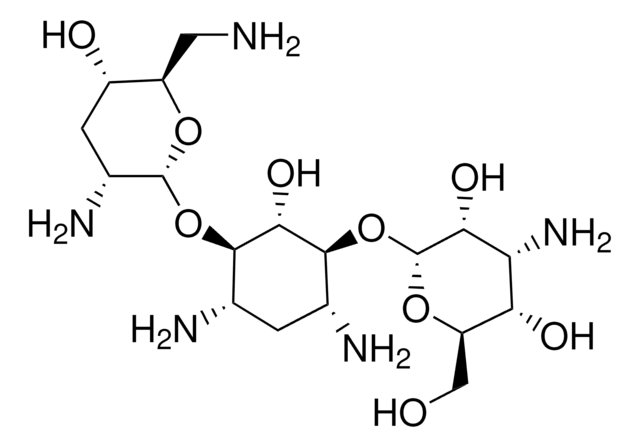추천 제품
Quality Level
분석
≥99%
양식
solid
refractive index
n20/D 1.569 (lit.)
bp
178 °C/25 mmHg (lit.)
mp
25-27 °C (lit.)
density
1.482 g/mL at 25 °C (lit.)
저장 온도
room temp
SMILES string
[O-][N+](=O)c1ccc(F)c(c1)[N+]([O-])=O
InChI
1S/C6H3FN2O4/c7-5-2-1-4(8(10)11)3-6(5)9(12)13/h1-3H
InChI key
LOTKRQAVGJMPNV-UHFFFAOYSA-N
유사한 제품을 찾으십니까? 방문 제품 비교 안내
일반 설명
1-Fluoro-2,4-dinitrobenzene (DNFB) is a reagent that modifies the N-terminal amino acids of proteins and peptides. DNFB is also commonly known as Sanger′s Reagent, named after Frederick Sanger, who reported in a classic 1945 paper the use of DNFB for derivatization of proteins and peptides specifically at their N-termini.†
애플리케이션
1-Fluoro-2,4-dinitrobenzene has been used to induce severe contact hypersensitivity in mice and to monitor gene expression by in vivo imaging method, and to induce chronic itch as a model for analysing itch-scratching behavior.
생화학적/생리학적 작용
1-Fluoro-2,4-dinitrobenzene is a contact-sensitizing hapten, commonly used in experimental studies on contact hypersensitivity, inducing itch model, and atopic dermatitis. Mast cell activation is a key step in the DNFB induced sensitivity. DNFB covalently binds to the N-terminal amino acid of the protein and aids in Sanger sequencing.
신호어
Warning
유해 및 위험 성명서
Hazard Classifications
Acute Tox. 4 Oral - Eye Irrit. 2 - Skin Irrit. 2 - Skin Sens. 1 - STOT RE 2 - STOT SE 3
표적 기관
Respiratory system
Storage Class Code
10 - Combustible liquids
WGK
WGK 3
Flash Point (°F)
327.2 °F
Flash Point (°C)
164 °C
개인 보호 장비
dust mask type N95 (US), Eyeshields, Faceshields, Gloves
이미 열람한 고객
Imaging protective mast cells in living mice during severe contact hypersensitivity
Reber LL, et al.
JCI insight, 2(9), e92900-e92900 (2017)
Microbial Genetics (2014)
Bamboo salt suppresses skin inflammation in mice with 2, 4-dinitrofluorobenzene-induced atopic dermatitis
Yoou MS, et al.
Chinese Journal of Natural Medicines, 16(2), 97-104 (2018)
Tac1-Expressing Neurons in the Periaqueductal Gray Facilitate the Itch-Scratching Cycle via Descending Regulation
Gao ZR, et al.
Neuron, 101(9), 45-59 (2018)
Beatrice Parma et al.
Journal of experimental & clinical cancer research : CR, 40(1), 248-248 (2021-08-09)
The identification of novel targets is of paramount importance to develop more effective drugs and improve the treatment of non-small cell lung cancer (NSCLC), the leading cause of cancer-related deaths worldwide. Since cells alter their metabolic rewiring during tumorigenesis and
자사의 과학자팀은 생명 과학, 재료 과학, 화학 합성, 크로마토그래피, 분석 및 기타 많은 영역을 포함한 모든 과학 분야에 경험이 있습니다..
고객지원팀으로 연락바랍니다.